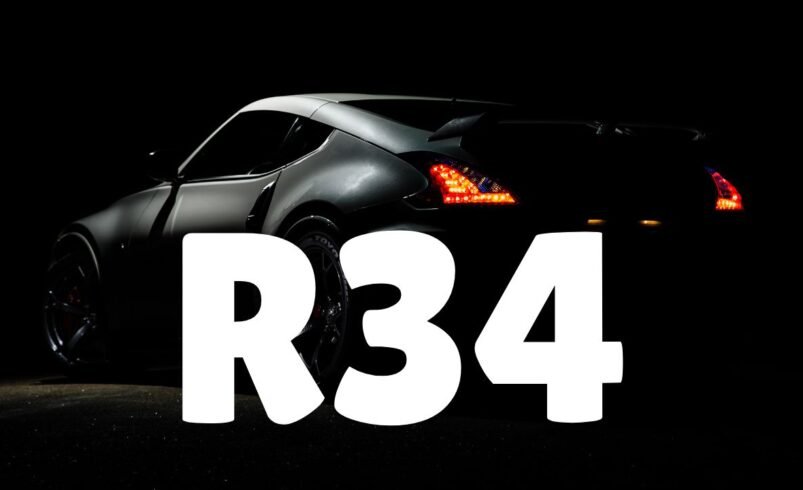Behind r34: Decoding the Internet’s Most Controversial Meme Phenomenon
- June 3, 2025
- 0
Type “r34” into almost any search bar, and you will be catapulted into one of the web’s most notorious rabbit holes. Short for “Rule 34,” the term is
Type “r34” into almost any search bar, and you will be catapulted into one of the web’s most notorious rabbit holes. Short for “Rule 34,” the term is

Type “r34” into almost any search bar, and you will be catapulted into one of the web’s most notorious rabbit holes. Short for “Rule 34,” the term is a sardonic shorthand for the claim that if something exists, there is porn of it—no exceptions. Over two decades, the phrase has metastasized from a throw-away 4chan in-joke into a cultural flash point that collides with questions of free expression, consent, platform responsibility, and the runaway power of generative AI. To understand why this two-letter, two-digit keyword still sparks fierce debate in 2025, we need to trace its origins, unpack the mechanics that keep it alive, and explore the legal and ethical firefights now raging around it.
Like many internet legends, r34 was born in relative obscurity. Sometime in late 2003, an anonymous 4chan user posted a tongue-in-cheek “Rules of the Internet” list that numbered well past thirty. The thirty-fourth rule—originally meant as a jab at the site’s anything-goes imageboards—read, “If it exists, there is porn of it.” The joke stuck. Within months, off-site communities were citing “Rule 34” to describe the growing pile of explicit fan art targeting everything from children’s cartoons to obscure household appliances. Because the entire list was improvised, the number “34” had no special significance, yet its arbitrariness became part of the folklore, proof that the web could mint cultural law out of thin air. tvtropes.orgreddit.com
r34 differs from garden-variety porn not just in subject matter but in the social ritual that sustains it. Participants treat it as a scavenger hunt, challenging one another to locate or create explicit content for increasingly improbable subjects: the default Windows XP wallpaper, a jar of peanut butter, or the periodic table. Every successful find becomes a trophy in the ongoing game of one-upmanship, reinforcing the belief that the internet’s capacity for erotic reinterpretation is effectively infinite. This competitive spirit encourages fan artists to push boundaries of style and taste. At the same time, lurkers reward them with upvotes, reposts, and memes that accelerate distribution across Reddit, X/Twitter, Telegram channels, and private Discord servers. Over time, r34 has evolved into a meta-meme—less about any specific image and more about the collective performance of fearless creativity (or shameless provocation, depending on your view).
If the 2010s cemented r34 as a cultural fixture, the 2020s turbo-charged it. The release of open-source text-to-image diffusion models lowered the skill barrier to near-zero: type “sexualized version of [cartoon character] in Renaissance oil-painting style,” and a plausible image appears in seconds. Predictably, r34 creators flooded X and TikTok with AI-generated erotica; in early 2024, fans of pop icon Taylor Swift woke up to dozens of hyper-real synthetic nudes that briefly trended before moderators could respond. theverge.com The same technology powered an explosion of deepfake porn involving real, non-consenting adults. This development forced lawmakers worldwide to ask whether existing obscenity and copyright regimes were enough to curb the spread.
Legislators have moved unevenly but decisively. In the European Union, the forthcoming AI Act imposes transparency mandates on any deepfake generator and opens the door to steep fines for platforms that ignore takedown requests. arno.uvt.nlentrust.com The United Kingdom’s Online Safety Act, meanwhile, grants Ofcom sweeping powers to require “safety-by-design” features, age-verification, and rapid removal of non-consensual sexual content, with penalties up to 10 percent of global turnover for scofflaw companies. commonslibrary.parliament.ukwired.com Across the Atlantic, the U.S. Congress passed the Take It Down Act in April 2025, explicitly criminalizing the distribution of AI-fabricated nude images without consent and empowering victims to demand instant removal. klobuchar.senate.govpryorcashman.com Although these measures aim to protect privacy and children, free-speech advocates warn that sweeping liability rules could chill legitimate fan art or satirical remix culture—echoing the broader anxiety that r34 now sits at the crossroads of personal autonomy and creative freedom.
Why, despite moral panic and legal crackdowns, does r34 persist? Part of the answer lies in novelty: people are hardwired to pay attention to taboo content because it signals social boundaries. Another factor is tribal—posting or consuming r34 can serve as a badge of membership in an in-group that prides itself on irreverence and technical savvy. Finally, the participatory nature of meme culture means that every attempt to stamp out r34 adds to its lore. The moment a platform removes explicit fan art of, say, a beloved children’s character, screenshots and protests circulate elsewhere, turning the deletion itself into new content. Researchers who study online deviance call this the “hydra effect”: cut off one head, and two appear in darker corners of the web.

Not everyone under the r34 umbrella is comfortable with the movement’s excesses. Major fan-art hubs such as Newgrounds and Pixiv now tag AI-generated adult material separately, require clear labeling, and allow artists to opt out of depictions of their original characters. Some fandoms proactively quarantine explicit art behind password-protected forums or insist on “redraw challenges” that replace sexualized imagery with comedic “Safe for Work” alternatives—Rule 63’s gender-swap humor, for instance, often overlaps. Platforms like Reddit have rolled out automated detection for deepfake genitals, while Discord’s mature-content gates require server owners to verify age before sharing explicit media. In the UK, Ofcom’s draft codes of practice further urge services to integrate friction—blurred previews, warning screens, click-through disclaimers—to reduce accidental exposure, especially for minors. gov.uk
Looking forward, r34 faces a paradoxical future. Watermarking mandates and cryptographic provenance tools may make it easier to trace the lineage of explicit AI images, empowering takedown mechanisms at scale. On the other, the meme thrives on cat-and-mouse dynamics; every new filter spawns a workaround. Some observers predict a cultural split: mainstream platforms will domesticate r34 into a more tightly regulated, opt-in niche. At the same time, decentralized networks and encrypted peer-to-peer protocols will preserve its anything-goes ethos. What seems inevitable is that the phenomenon has already etched itself into digital folklore. Whether celebrated as a testament to human creativity or condemned as proof of online depravity, r34 endures because it embodies the internet’s eternal tension between curiosity and control.
From a single sardonic line on an anonymous message board, r34 has become a shorthand for the internet’s boundless (and often boundary-breaking) imagination. Over twenty-plus years, it has outlived shifts in platform dominance, survived multiple moral panics, and, thanks to AI, multiplied its reach by orders of magnitude. Lawmakers are scrambling to keep pace, artists are renegotiating consent in public view, and users continue to test the limits of what can—and should—be shared. Understanding r34 is ultimately a study of digital culture’s feedback loop: the same forces that birth a joke can, given enough time and technology, reshape global debates about freedom, privacy, and the very texture of art.
1. What does “r34” actually stand for?
It is shorthand for “Rule 34” of an informal “Rules of the Internet” list popularized on 4chan around 2003, which states: “If it exists, there is porn of it—no exceptions.”
2. Is creating or sharing r34 content illegal?
It depends. Fictional parodies of copyrighted characters may infringe copyright. At the same time, depictions of real people without consent can violate privacy, defamation, or new deepfake-specific laws such as the U.S. Take It Down Act (2025) and provisions in the EU AI Act. Distribution involving minors is categorically illegal worldwide.
3. How has AI changed the r34 landscape?
Text-to-image diffusion models let anyone generate convincing explicit art in seconds, dramatically lowering technical barriers and widening the scope—from cartoon characters to photorealistic deepfakes of celebrities and private individuals.
4. What can artists do if their character appears in r34 content?
Many platforms now honor DMCA-style takedown requests for copyright holders. Some also offer “opt-out” databases for AI training sets. However, enforcement remains imperfect, especially on decentralized or foreign-hosted sites.
5. Will r34 ever disappear?
Unlikely. Even aggressive regulation cannot erase the underlying impulse to remix, parody, or sexualize cultural icons. More probable is a future in which explicit content is watermarked, quarantined, and age-gated—visible but segregated—while niche communities preserve less restricted archives on the fringes of the web.